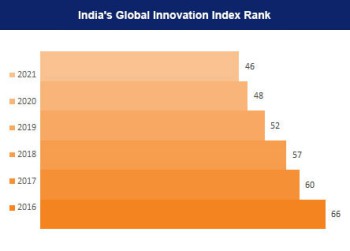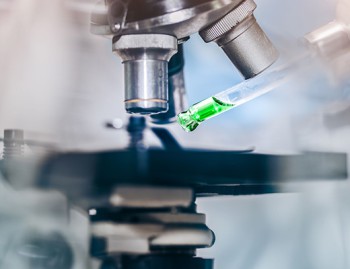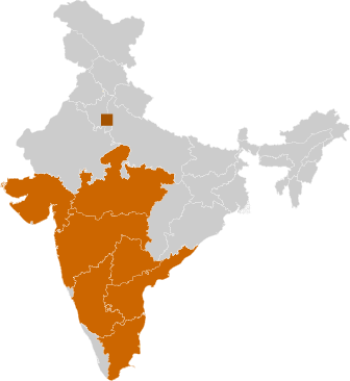INTRODUCTION
India ranks third among the most attractive investment destinations for technology transactions in the world. Modern India has had a strong focus on science and technology, realising that it is a key element for economic growth. India is among the topmost countries in the world in the field of scientific research, positioned as one of the top five nations in the field for space exploration. The country has regularly undertaken space missions, including missions to the moon and the famed Polar Satellite Launch Vehicle (PSLV).
India is likely to take a leading role in launching satellites for the SAARC nations, generating revenue by offering its space facilities for use to other countries.
As of November 2021, the number of universities in India stood at 1,019.

MARKET SIZE

In October 2020, the National Investment and Infrastructure Fund (NIIF) is making progress towards integrating its road and highway portfolio. The NIIF has acquired Essel Devanahalli Tollway and Essel Dichpally Tollway through the NIIF master fund. These road infra-projects will be supported by Athaang Infrastructure, NIIF's proprietary road network, assisted by a team of established professionals with diverse domain expertise in the transport field.
India now ranks 46 among 50 countries in the Global Innovation Index (GII); this is an improvement from the 48th position in 2020. The Government is extensively promoting research parks technology business incubators (TBIs) and (RPs), which would promote the innovative ideas till they become commercial ventures.
By 2022, R&D expenditure is targeted to reach at least 2% of the country’s GDP. The engineering R&D and product development market in India is forecast to post a CAGR of 12% to reach US$ 63 billion by 2025, from US$ 31 billion in 2019.
IT spending in India will grow 7% YoY to reach US$ 101.8 billion in 2022, compared to U$ 81.89 billion in 2021.
In FY21, the science and technology sector added 1,497,501 employees, becoming India’s top employment generator.
India's National Artificial Intelligence Strategy prepared by NITI Aayog outlined a way forward to harness the potential of Artificial Intelligence (AI) in different fields. Accenture offers a framework for assessing the economic effect of AI for selected G20 countries in its latest AI research studies and forecast that AI will raise India's annual growth rate by 1.3% points by 2035.
India ranked 46th in the Global Innovation Index for 2021. In the Bloomberg Innovation Index, 2021, India ranked 50th in terms of innovations. In South Asia, India is the only country to be represented on the index. India moved up to fifth rank in the Global R&D Funding Forecast 2021.
INVESTMENTS/DEVELOPMENTS
With support from the Government, considerable investment and development has incurred in different sectors such as agriculture, healthcare, space research, and nuclear power through scientific research. For instance, India is gradually becoming self-reliant in nuclear technology.
RECENT DEVELOPMENTS
Some of the recent developments in the field of science and technology in India are as follows:
- In March 2022, Toyota launched its Mirai hydrogen fuel cell car in India. The Indian Oil Corporation would be supplying hydrogen to power the car.
- As per the Economic Survey 2022, India’s gross domestic expenditure on R&D (GERD) as a percentage of GDP stood at 0.66%.
- India's Top 5 IT firms (TCS, Infosys, Wipro, HCL and Tech Mahindra) added more than 122,000 employees in in the first six months of FY22, nearly matching the 138,000 employees hired in the entirety of FY21.
- In 2021, the Indian pharma industry showed double digit growth of around 13-15% led by growth of Covid-19 products, as against a single digit growth of 3% shown in 2020.
- In November 2021, the Ministry of Science and Technology and Ministry of Earth Sciences, in association with Vijnana Bharati (VIBHA), launched India International Science Festival 2021, a unique platform, with its theme being celebration of creativity in science, technology and innovation for a prosperous India
- In November 2021, Atal Innovation Mission and Vigyan Prasar collaborated to drive synergies between Atal Tinkering Labs and Vigyan Prasar’s unique platform, Engage With Science.
- In October 2021, the government announced plans to establish 75 science technology & innovation hubs in India for scheduled castes (SCs) and scheduled tribes (STs) and empower them to contribute to the socio-economic improvement of the country.
- In October 2021, the government launched the Indian Space Association (ISpA) to accelerate technology advancements and strengthen the space sector in the country.
- India offers various opportunities for research & development and innovations. As of 2021, >70% of the 50 most innovative firms across the world have a research and development centre in India.
- In October 2021, Biz2Credit, a fintech company, announced plan to invest US$ 100 million in India over the next five years on research and development activities and expansions.
- In October 2021, India and Denmark agreed for a five-year plan to implement green strategic partnership for enhancing collaboration in various areas including science and technology.
- In October 2021, India and Europe held discussions to review the progress on science and technology bilateral cooperation and strengthen efforts on research and innovation.
- On September 27, 2021, DRDO tested a new version of the Akash Missile, Akash Prime, equipped with an active Radio Frequency (RF) seeker for improved accuracy.
- In September 2021, Union Minister of State (Independent Charge) Science & Technology, Minister of State (Independent Charge) Earth Sciences, MoS PMO, Personnel, Public Grievances, Pensions, Atomic Energy and Space, Dr. Jitendra Singh, launched the ‘AmritGrand Challenge Programme’ called ‘JANCARE’. This programme has been launched to identify 75 start-ups in several sectors such as telemedicine, digital health and mHealth with Big Data, AI, blockchain and other technologies.
- In September 2021, Atal Innovation Mission and Dassault Systèmes announced their plan to set up an innovation and entrepreneurship ecosystem across India.
- In August 2021, the Government of India announced its support to 75 start-ups in the areas of telemedicine, artificial intelligence and digital health.
- From 2014 to 2021, India recorded a 572% growth in patent approvals.
- In September 2021, India published the amended Patents Rules (2021) and reduced fees by 80% for educational institutions.
- In July 2021, ISRO announced that its geo-imaging satellite ‘EOS-03’, which will enable near-real time monitoring of natural disasters such as floods and cyclones, is scheduled for launch in the third quarter of 2021 and Chandrayaan-3 is likely to be launched in the third quarter of 2022.
- In August 2021, the central government approved Deep Ocean Mission (DOM), which will be implemented by the Ministry of Earth Sciences at a total budget of Rs. 4,077 crore (US$ 548.54 million) for five years. The mission is a multi-ministerial, multi-disciplinary programme to develop deep-sea technologies such as manned submersibles (that are rated for 6,000-metre water depth) and enable deep-sea mining, exploration of deep-sea mineral resources and marine biodiversity, acquisition of a research vessel to explore oceans, conduct deep-sea observations and build capacities in marine biology research.
- In August 2021, Union Minister of State (Independent Charge) Science & Technology, Dr. Jitendra Singh announced that gamma irradiation technology for food preservation has been shared with private players and at present, 26 gamma radiation processing plants are operational in the country in private, semi government and government sector for irradiation of various products.
- In August 2021, ISRO announced that it is in discussions with European and Israeli space agencies to boost cooperation and recognise potential opportunities to work.
- In August 2021, INDIAai and NASSCOM launched the first edition of the Lab2Market initiative to boost industry-academia collaboration.
- DST and GE India are likely to collaborate for Advanced Technology Research, according to the Science and Engineering Research Board. Over the next five years, academic institutes will get up to US$ 2.68 million in funding for research in the fields of energy, healthcare and aviation.
- In June 2021, DRDO developed an anti-drone technology to detect and neutralise unmanned aerial vehicles. This technology uses radar system that offers 360-degree coverage.
- On June 28, 2021, DRDO tested a nuclear-capable ballistic missile ‘Agni P’ with range capability of 1,000-2,000 kms.
- On June 9, 2021, ICAR signed a MoU with the Digital India Corporation to provide location-specific demand-based tele-agriculture advisories.
THE UNION BUDGET 2022-23
Under the Union Budget 2022-23, the government announced allocation of Rs. 14,217 crore (US$ 1.86 billion) to the Ministry of Science and Technology. The Department of Atomic Energy was allocated Rs. 22,723.58 crore (US$ 2.97 billion), the Department of Science and Technology (DST) was allocated Rs. 6,000 crore (US$ 785.64 million), and the Ministry of Earth Sciences was allocated Rs. 2.653.51 crore (US$ 347.45 million).
ROAD AHEAD
India is aggressively working towards establishing itself as a leader in industrialisation and technological development. Significant developments in the nuclear energy sector are likely as India looks to expand its nuclear capacity. Moreover, nanotechnology is expected to transform India’s pharmaceutical industry. The agriculture sector is also likely to undergo a major revamp with the government investing heavily for a technology-driven Green Revolution. Government of India, through the Science, Technology and Innovation (STI) Policy-2013, among other things, aspires to position India among the world’s top five scientific powers. Indian Space Research Organisation (ISRO) will launch its first Indian human mission by 2022.
India initiated a landmark policy called Science, Technology and Innovation Policy 2020 with core vision of being decentralized, evidence informed, bottom-up, experts-driven, and inclusive. The policy aims to be bring-in the concept of ‘dynamic policy’ with a robust policy governance mechanism incorporating features such as periodic review, policy evaluation, feedback, and adaptation, and a timely exit strategy for various policy instruments.
References - Media reports, Press Releases, Press Information Bureau (PIB), Union Budget 2022-23
Disclaimer: This information has been collected through secondary research and IBEF is not responsible for any errors in the same

Major Indian States for Science and Technology
- Maharashtra
- Gujarat
- NCR
- Karnataka
- Tamil Nadu
- Telangana
- Andhra Pradesh
- Madhya Pradesh

Industry Contacts
- National Academy of Sciences
- Indian Science Congress Association
- Indian National Science Academy
- Indian Academy of Sciences
- Department of Science and Technology
- Indian National Academy of Engineering